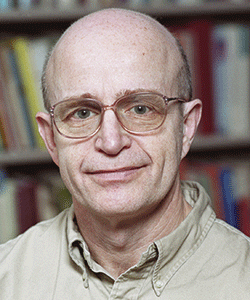John R. Anderson
 Carnegie Mellon University
Carnegie Mellon University
William James Fellow Award
John Anderson is widely known for his cognitive architecture, ACT-R (Adaptive Control of Thought — Rational), a theory dealing primarily with memory structure. He was also an early leader in research on intelligent tutoring systems (ITS), computer systems that provide immediate and customized instruction or feedback to learners.
ACT-R is described as a way of specifying how the brain itself is organized in a way that enables individual processing modules to produce cognition. Using the ACT-R model, Anderson’s studies have looked at neural processes of people while they are solving complex problems such as algebraic equations. He and colleagues generated a cognitive model that predicted that while students were solving algebraic equations, neuroimages would show increased activation in a number of predefined regions. They further predicted and confirmed that this increase in activation would diminish as students acquired proficiency in solving these problems.
Anderson’s work served as the basis for the development of ITS, which are now being used in both formal education and professional settings. A noteworthy example of his impact is the Pittsburgh Science of Learning Center (PSLC), a joint program of Carnegie Mellon and the University of Pittsburgh. The center uses tutoring software to develop effective new ways of teaching and to gather valuable information about the learning process from students in actual classrooms rather than laboratory environments.
Anderson’s cognitive modeling techniques have profoundly advanced computer-assisted learning in subjects ranging from mathematics to foreign languages.





APS regularly opens certain online articles for discussion on our website. Effective February 2021, you must be a logged-in APS member to post comments. By posting a comment, you agree to our Community Guidelines and the display of your profile information, including your name and affiliation. Any opinions, findings, conclusions, or recommendations present in article comments are those of the writers and do not necessarily reflect the views of APS or the article’s author. For more information, please see our Community Guidelines.
Please login with your APS account to comment.